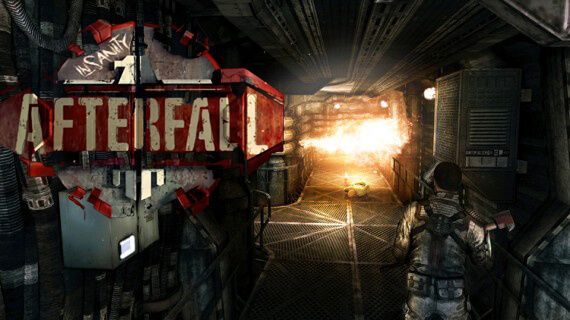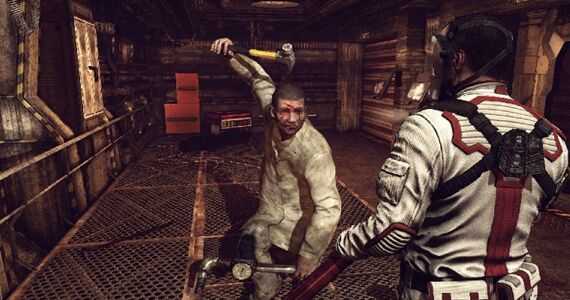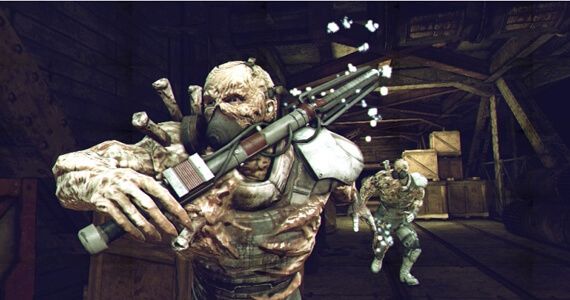Game Rant's Curt Hutson reviews Afterfall: InSanity
In a post apocalyptic world ravaged by nuclear bombs, the outside world has become inhabitable. The remaining humans have gathered in an underground shelter away from the harsh wasteland outside, attempting to simply survive in their new surroundings — but the yearning to return to their previous lives outside is strong and the shelter has its inhabitants feeling claustrophobic, cooped up... crazy.
That's the grim setting of Afterfall: InSanity. While as an audience players realize there is more to this prison like facility with hints to a greater mystery to unravel, the beginning portions of the game don't do much to pique interest, something a good opener should. An often-clumsy script and monotonous combat can make playing a chore, but forging through can be rewarding and certain aspects make it a worthwhile experience.
As the only psychiatrist in the community, it falls on Dr. Tokaj to keep together the sanity of the only known survivors of a ruined world. In one of his sessions, the good doctor dozes off only to be woken up by a particularly whiny patient. As soon as they part he can’t shake the feeling something is wrong and is soon accused of an undisclosed crime, prompting the entire facility's security to come down on him.
Immediately players are thrown into a confusing situation where their only choices are to fight back through unnecessarily violent means. We’re talking exploding heads with crowbars, violent -- adding to a sense of darkness within the character. While the guards inexplicably attempt to arrest Tokaj, players are forced to simply go with it and, without a larger motivation, this makes for a disconnected and bland problem to overcome. In fact gamers feel that same disconnect with the majority of characters they'll encounter. Exchanges and cutscenes, which are meant to add to the story, are tedious and succeed only in dragging the experience down. The often poor voice acting doesn’t help the problem.
In terms of combat, enemies represent a range of mutant-like humanoids, some of which are grotesque, hulking monsters, and the player's only defense is a very shoddy combat system consisting of directional buttons - combined with a button for attacking and another for defense, as well as the ability to evade, or tumble (apparently parkour was required curriculum at Tokaj's alma mater). Swinging fists or a found object, such as pipes, wrenches or axes, is sporadic and requires little skill or strategy. The enemies, however, have a better handle on the system and gracefully attack in combinations players will likely never be able to master. When guns are finally made available, the combat becomes a bit of a cakewalk, but can be a real relief when alone in especially dark spaces. Ammo is spread liberally throughout and the controls are solid, making the game clearly more satisfying as a shooter than anything else.
The atmosphere in Afterfall: InSanity is one of the game's strongpoints. The game is filled with all manner of things that go bump in the night - and bump they do. The environments and tone make perfect use of sound to keep players on edge and grounded in the experience. Footsteps, maniacal ravings, machinery and other spooky ambient noises will make players dread turning any corner. Also, lighting is used to great effect. When lighting is poor, more than just vision is impaired - as stumbling around in the darkness allows fear to take hold. Everything players see and hear may betray them, aiming becomes shaky and the screen distorts a bit. It's a cool conditional mechanic that amps up the creep factor significantly and will have players scrambling to defend against the attacks of dark creatures - and they will attack.
The soundtrack is another highlight. Never too recycled or banal, certain tracks will get a player's heart racing and pull them into the scene - especially when combined with quick-time events that heighten the excitement. Unfortunately, a good portion of the facial animations and stiff body mechanics don't fare nearly as well and, despite a strong and enriching score, will jerks gamers right out again.
Puzzles are prevalent throughout and can go from simple to grueling in a short span of time. Most are controlled by using the four movement buttons and range from simply memorizing button combinations, used in hacking, to timed puzzles that require players to travel to multiple areas (i.e. hard). For the most part, the puzzles were surprisingly varied and challenging for only using four buttons and more often than not manage to be enjoyable. Occasionally instructions can be too vague or puzzles are broken down to simple trial and error, but the puzzles themselves are a nice reprieve from the action and intensity of the game. The final brainteasers near the end of the game will have players pulling their hair out - but is a welcome challenge after a fairly simple start.
Afterfall: InSanity is an example of a game that sits about even with pros and cons. The combat system is awkward and, since combat is a huge focus, the entire experience suffers. Clunky dialogue and shallow interactions with characters will leave players dreading cutscenes, especially in the opening, but if they can forge through there's an overall enjoyable experience at hand. For a horror game, it does the genre well, consistently supplying players with goose prickles and a general feeling of uneasiness. There is plenty of fun to be found in Afterfall: InSanity if gamers have the patience to keep playing and the title is especially ambitious for an indie game.
Afterfall: InSanity is out now for PC with further plans to port the game to Xbox 360 and PlayStation 3.



